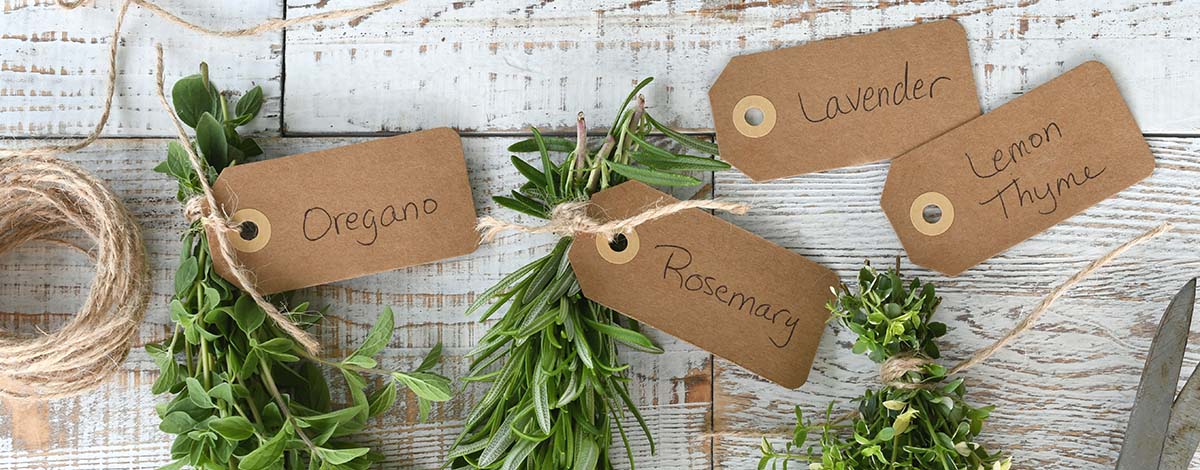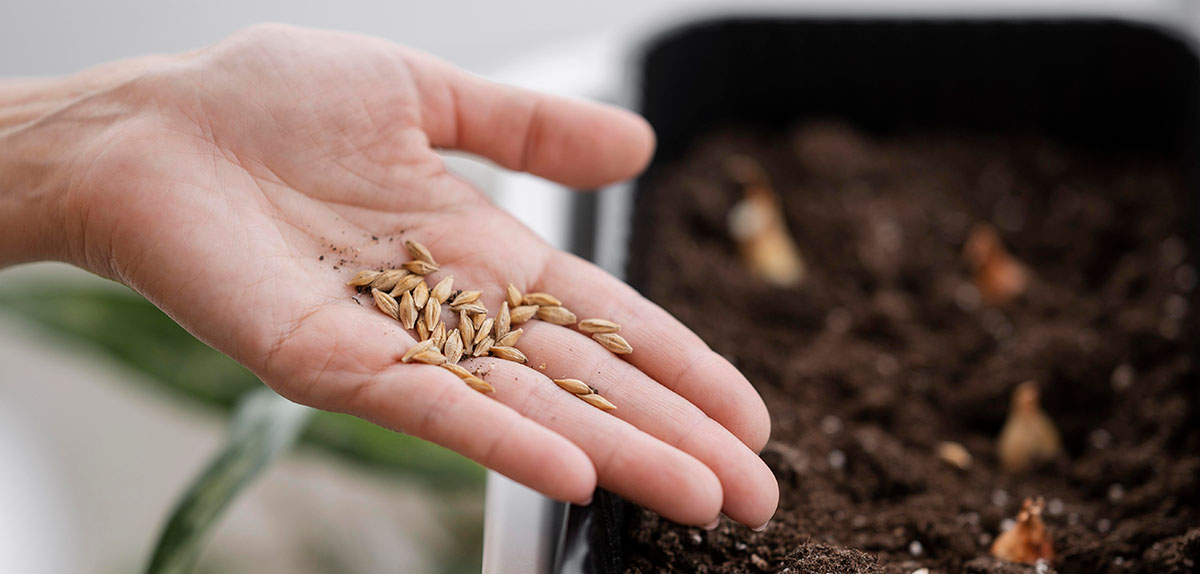
We collect basic website visitor information on this website and store it in cookies. We also utilize Google Analytics to track page view information to assist us in improving our website.
Spring Season starting to book up. Promotions Available for Winter.

Do you love to cook with fresh herbs but find the store-bought packaged herbs and plants quickly fade after you bring them home? Are you looking for more ways to enjoy your outdoor living space? Then you may love having an herb garden on your deck or patio!
Growing your own food at home has many joys and benefits, such as convenience, cost-savings, freshness, and knowing where your food comes from. Gardening is also a great opportunity to have family time and build memories with the kids while teaching them valuable life skills. These are just a few reasons why more homeowners are finding ways to add an herb garden to their outdoor living space!
Below, we cover some basic steps for starting an herb garden and offer tips for success. Continue reading to learn more!
Before you start building beds or shopping for pots, soil, plants, and seeds, there are some important steps to follow, including:
Considering your space
Identifying herbs your family will eat
Understanding each herb plant’s needs
Planning your garden layout
Purchasing seeds or starter plants
Preparing your planting areas
Planting your herb garden
We dive deeper into each of these steps below.
The first step for adding an herb garden to your outdoor living area is to consider how much space you have available for plants. While many herbs can be grown in small spaces, you will still need to determine if you will plant them directly in the ground, raised beds, planter boxes, or containers.
In addition to considering the physical space available, it is also important to evaluate conditions like hours of sunshine and the type of soil in different parts of your outdoor living areas. As we will cover later, these factors may make or break the success of your herb garden.
Pro Tip: if you are really limited on space on your deck, patio, or balcony, consider building or purchasing a vertical garden. Vertical gardens are attractive additions to your outdoor living areas (link to Premier blog on vertical gardens) and make growing and harvesting herbs incredibly easy and convenient!

While it is fun in the moment to load up your shopping cart with starter plants and seeds in the spring, you may find that you have overcommitted when it comes time to plant and maintain your new herb garden. For this reason, it is recommended that you first create a list of the herbs that you and your family already use on a regular basis.
Only growing what your family likes will help ensure you do not take up more space than needed in your backyard or on your deck or patio. It also reduces the likelihood of your beautiful herbs going to waste if no one in your household eats them. In addition, only growing what you need will also make your herb garden more economical, as the cost of establishing new gardens/container gardens can be costly in the first year.
Of course, there is always room for a unique herb that your family wants to try, but it is generally best to plan and plant your herb garden very intentionally.
Once you have prepared the list of herbs you’d like to grow, you can begin learning about what each one needs to thrive. For example, some herbs require full sun and well-draining soil, while others can tolerate areas with partial shade and wetter soils. Some herbs grow small and compact, while others are tall and bushier at maturity. Some herbs come back every year in your Hardiness Zone, while others require you to replant annually.
Learning about the needs and growth patterns of the herbs you think you would like to plant can help you determine if you have enough space and the right growing conditions in your outdoor living areas before you invest in seeds or starter plants.

Now that you have a general plan and some knowledge to help you succeed, you can start purchasing your plants and seeds! The seed packs for each variety of herb will provide instructions on how and when to plant them. Herb starter plants should also come with planting instructions.
Be sure to store your seeds in a cool, dry place before planting in starter pots or directly into your garden in the spring. Keep your starter plants in a sunny location and don't forget to water them regularly. You should also plan to "harden off" all seedlings and starter plants, which means slowly acclimatizing them to outdoor conditions before moving them fully outdoors.
If you thought it was finally time to pop everything into the ground or larger containers, there is still some more planning left to do before you dive in! Like vegetables and flowers, herbs have friends – otherwise known as companion plants – and foes. Their friends are plants that do not compete for water and nutrients and/or that help keep pests away. Foes are plants that stunt growth, promote disease, or attract hungry insects to their neighbour.
Therefore, before you start planting, be sure to look at the companion plants for all the herbs you are planning to grow and factor that information into the design of your garden layout. There are many resources available to assist you with companion planting, such as the Farmers’ Almanac.
Did you know? Many gardeners find that planning their garden layout is all part of the fun – especially in the winter and early spring when outdoor hobbies feel more limited.
Now that all the planning is out of the way, the snow has melted, and the risk of frost has passed, you are finally ready to start preparing your garden areas! While there is a whole world of soil science that is great to learn about as you become a more experienced gardener, raised bed/planter/container herb gardens will realistically thrive with simple, store-bought potting soil and some compost.
However, if you are building a brand-new garden bed in the ground or planning to rejuvenate a neglected bed, it is worth it to amend your soil to increase nutrients and address any soil conditions that are not ideal for herbs – such as clay. Your local landscaper or garden centre can help answer any questions you have about preparing in-ground planting sites for herb gardens.

Finally, you must start planting your herb garden! Whether you have decided to grow in containers, a raised bed, planter boxes, or an in-ground bed, plant your seeds or hardened-off starter plants according to the directions on the packet or tag.
When sowing or planting, pay attention to the spacing and depth requirements indicated. These factors are important for ensuring your herbs can thrive without competing for space, water, sunlight, and nutrients. Planting them too close together can also increase the risk of diseases - like powdery mildew that occurs when airflow between plants is limited.
Enjoy caring for your new herb garden throughout the season, and don't forget to share the abundance of delicious and fragrant herbs with friends and neighbours!
When the growing season in your region ends, bring your potted herbs inside. With adequate light and a bit of fertilizer, you should be able to enjoy your herbs even in the winter. Before you know it, it will be time to start dreaming up your herb garden again for next year!
In conclusion, adding an herb garden to your deck or patio is a fantastic way to spend more time outdoors while enjoying plentiful sources of flavour and nutrition – all from your backyard.
Starting an herb garden is easy, even if you have limited space. Just be sure to take time to learn about each herb plant’s needs, plant them in their ideal conditions, and only grow what you and your family will eat.
If you follow our tips and tricks, you'll have a thriving herb garden this spring and summer - and possibly some herbs you can enjoy indoors all winter long!
Are you seeking new ways to elevate your deck or patio while increasing your enjoyment of your outdoor living spaces? Then Premier would love to connect with you! Our highly professional team of deck and fence builders has been helping homeowners customize their outdoor living experiences for over 90 years. We proudly serve clients in Kitchener, Waterloo, Cambridge, and the surrounding areas.
Are you ready to get started on your next project? Reach out to us today to speak to a sales representative and schedule a no-obligation, on-site consultation!

